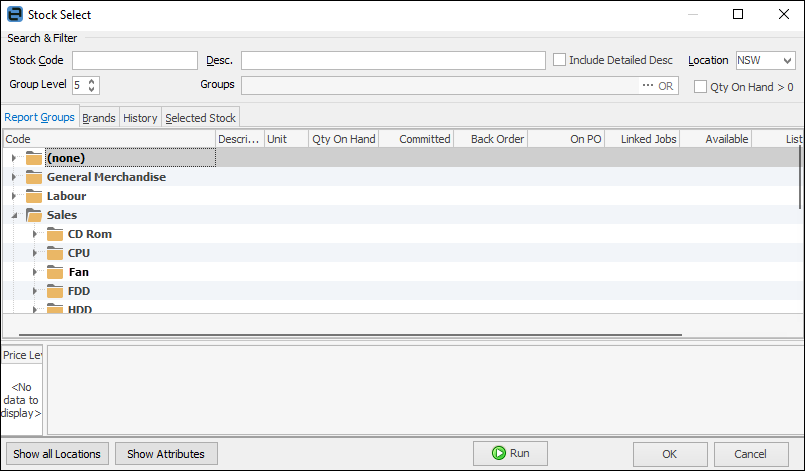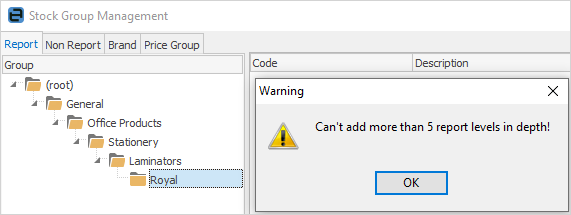
Jim2 Groups are a method of sorting cardfiles, Items, stock, projects (if licensed), users and documents into meaningful groups to refine searches, etc.
 |
Note: Group names have a character limit of 30. |
These do not necessarily have a basis in price level (but can also include that).
Groups can be quite general, eg. choose key business indicators used for marketing and/or business analysis, or relevant to issues such as demographics.

Report level groups can be thought of as the way stock should be grouped in reports, price lists, on your website and the Stock Select screen.
Although Jim2 Group Management makes it easy to maintain and organise groups, it is best to think logically about how the most can be made of groups prior to implementing them.
For instance, as part of a buying group or franchise, it is easy to implement a standard product tree among the group for reporting at a group level. Or make the grouping the same as the largest vendor or biggest stock mover.

 |
The default depth of the report levels used can be set under Tools > Options > Stock, as well as the default grouping – by report level or by vendor/region.

For example, in the above image there are 5 group levels (the maximum number of levels allowed). Once 5 group levels have been created, no more levels can be added.
 |
 |
Project groups will not be selectable unless the company has the appropriate Jim2 licence, either Managed Print Services or Managed Services. |
Cardfiles, Items, stock, projects, documents and users can be easily grouped and sorted by dragging from one tree branch to another.
The available group management options (tabs across the top of the Groups screen) for each of these five Jim2 objects are listed below:
Objects |
Group Management Options |
|---|---|
CardFiles |
Report, Non Report, Region |
Items |
Report, Non Report |
Stock |
Report, Non Report, Brand, Price Group |
Projects |
Report, Non Report, Brand |
Documents |
Folders, Tags, Category |
Users |
Tags, Category |
 |
The stock group management options allow to group stock by brand, then by price group, or by price group only. |
Further information
How to